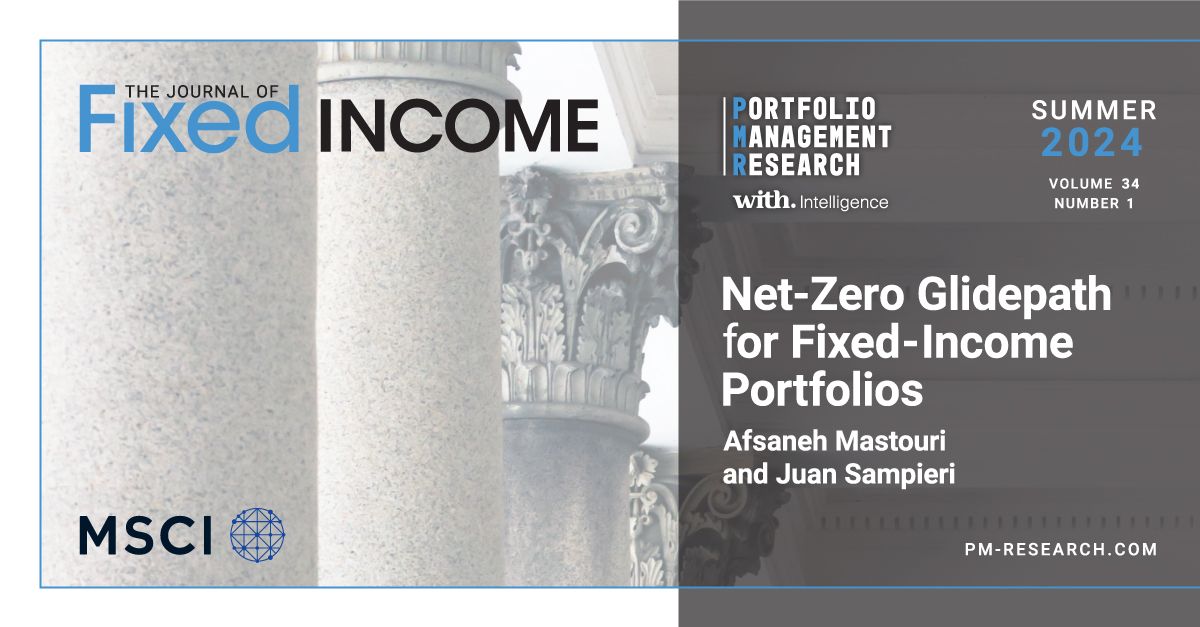Net-Zero Glidepaths for Fixed-Income Portfolios
Research Paper
September 12, 2023
Preview
A bond portfolio generates cash flows over time that include coupon payments and the face value of matured bonds, assuming no defaults. With controlled and systematic reinvestment of this cash flow, investors can gradually mold and modify their fixed-income portfolios' exposure to different risk factors, including credit-risk buckets; specific interest rates; or any issuer, sector or country risk. We propose that fixed-income investors can use this mechanism to design a flexible, smooth yet low-cost strategy - or a "glidepath" - to direct their portfolios toward their medium- and long-term objectives.
As an example, we show how different corporate bondholders can devise transition glidepaths, consistent with their security-selection process, to achieve their net-zero decarbonization targets - a case of long-term objectives. We present possible solutions - net-zero glidepaths (NZGps) - for two of the largest groups of corporate-bond investors: buy-and-hold investors and yield-seeking investors.
©2024 With Intelligence. Republished with permission from the Journal of Fixed Income, from: Afsaneh Mastouri and Juan Sampieri, "Net-Zero Glidepath for Fixed-Income Portfolios," Journal of Fixed Income 34, no. 1 (summer 2024).

Read the full paper
Read the full paper
Provide your information for instant access to our research papers.
Corporate Bonds and Climate Change Risk
In this paper, we highlight to investors and portfolio managers the significance of climate-change risk for the value of corporate bonds, as well as provide a framework for further research in this area.
Climate and Net-Zero Solutions
MSCI offers a suite of tools to help institutional investors benchmark, measure and manage portfolio exposure to climate risk, identify low carbon investment opportunities, and support investors seeking to set a net-zero target.
Green Bonds and Climate: Towards a Quantitative Method
While examining use of proceeds remains a key element of analyzing green bonds, we highlight four additional metrics to assess these bonds and their issuers in a more quantitative way. They offer a new set of lenses with which to tackle the analysis.
The content of this page is for informational purposes only and is intended for institutional professionals with the analytical resources and tools necessary to interpret any performance information. Nothing herein is intended to recommend any product, tool or service. For all references to laws, rules or regulations, please note that the information is provided “as is” and does not constitute legal advice or any binding interpretation. Any approach to comply with regulatory or policy initiatives should be discussed with your own legal counsel and/or the relevant competent authority, as needed.

